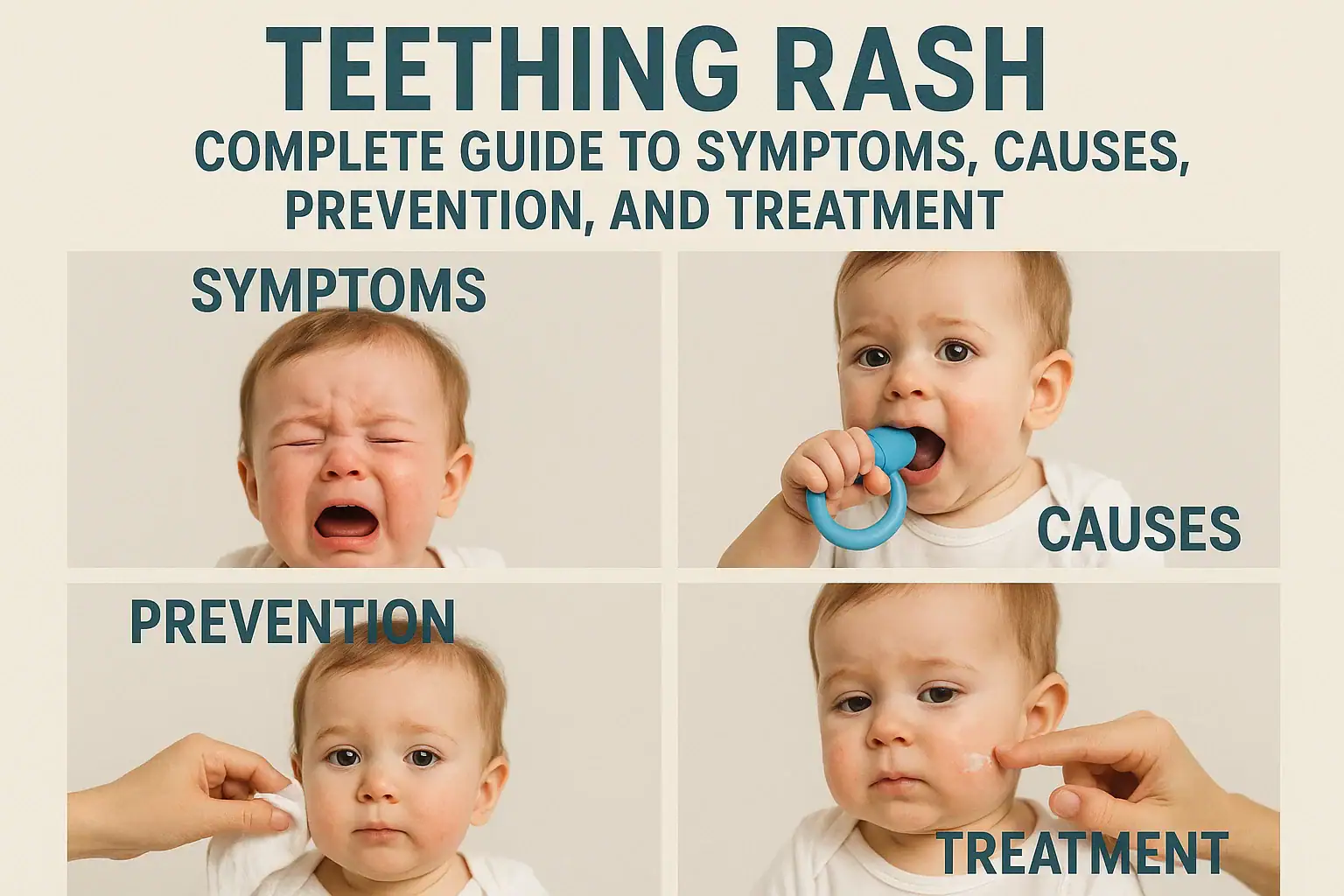Menu
Free Consultation

Teething rash, often referred to as a "drool rash," is a common skin reaction that many babies experience when their teeth begin to erupt. As infants start teething, their bodies respond in a variety of ways excessive drooling, chewing on objects, fussiness, and sometimes, the development of red, irritated patches on their cheeks, chin, neck, or chest. These symptoms are often harmless but can be uncomfortable and concerning for parents.
Understanding the nature of teething rash, its causes, and effective ways to prevent and treat it can help caregivers manage this phase with confidence.
The primary cause of teething rash is excessive drooling, which occurs due to increased saliva production during teething. When this saliva constantly comes into contact with a baby’s sensitive skin, it can break down the protective barrier and lead to inflammation, redness, and irritation.
Other contributing factors include:
Teething rash can show up in several areas, most commonly:
Recognizing a teething rash is crucial for proper care. Common symptoms include:
While teething rash is usually mild, parents should monitor symptoms for signs of infection or worsening.
Yes. Excess drooling associated with teething can absolutely cause a skin rash. While teething doesn’t directly cause skin conditions, the behaviors and physiological changes during teething particularly drool and the frequent contact with wet hands or objects can irritate the skin and create rashes.
While not directly connected, teething can lead to changes in bowel movements due to swallowed saliva, and this in turn may irritate the skin in the diaper area. However, teething does not cause diaper rash in every child. The rash in this case is typically due to a combination of acidity in the stool and increased bowel movement frequency.
Absolutely. The cheeks and mouth area are the most common sites for teething rash due to constant exposure to drool. Repeated wiping of the face and contact with saliva-saturated pacifiers or toys can also contribute to facial rash.
Teething rashes can be intermittent and may last for several days or even weeks, depending on:
If properly managed, rashes usually resolve within a week or two.
Preventing teething rash involves minimizing skin exposure to drool and maintaining good hygiene. Here are key strategies:
Using a barrier cream can protect your baby’s skin from excess moisture and irritation. Top choices include:
Apply the cream 2–3 times a day or after cleaning the face, especially before naps or bedtime.
Most teething rashes are mild and respond well to home care. However, contact your pediatrician if:
These signs could indicate a secondary infection or another underlying skin condition.
It's important to differentiate teething rash from other common baby skin conditions:
| Condition | Location | Appearance | Causes |
|---|---|---|---|
| Teething Rash | Face, chin, neck | Red, blotchy, moist | Drooling during teething |
| Eczema | Cheeks, joints | Dry, scaly, itchy | Allergens or irritants |
| Heat Rash | Neck, armpits, back | Tiny red bumps | Overheating and sweat |
| Contact Dermatitis | Where skin touches irritants | Red, itchy, with possible blisters | Allergens in products or fabrics |
Understanding the difference ensures correct treatment and faster relief.
In addition to barrier creams, some parents prefer natural methods:
Always test a small area of your baby’s skin first to check for allergies.
Can teething cause a rash on the body?
Typically no. Teething rash is limited to areas exposed to drool, like the face and chest. If a body-wide rash appears, consult a doctor.
Should I stop using pacifiers or teething toys?
Not necessarily. Just ensure they’re clean and dry, and avoid letting wet objects rest on the baby’s skin for long periods.
What if the rash is around the mouth and smells bad?
This could be a yeast infection. If there’s a foul odor or white patches, consult your pediatrician.
Teething is a significant developmental milestone, and while it brings discomfort, it also paves the way for your child’s beautiful smile. Teething rash is a manageable side effect — one that, with the right information and care, doesn’t have to cause unnecessary stress.
By staying attentive to symptoms, keeping your baby’s skin clean and dry, and using gentle barrier creams, you can greatly reduce the impact of teething rash. Always consult with a pediatrician if you’re unsure about any skin changes or if the condition seems to worsen.
With proactive care, your little one can navigate the teething stage comfortably and confidently — rash-free and smiling.
